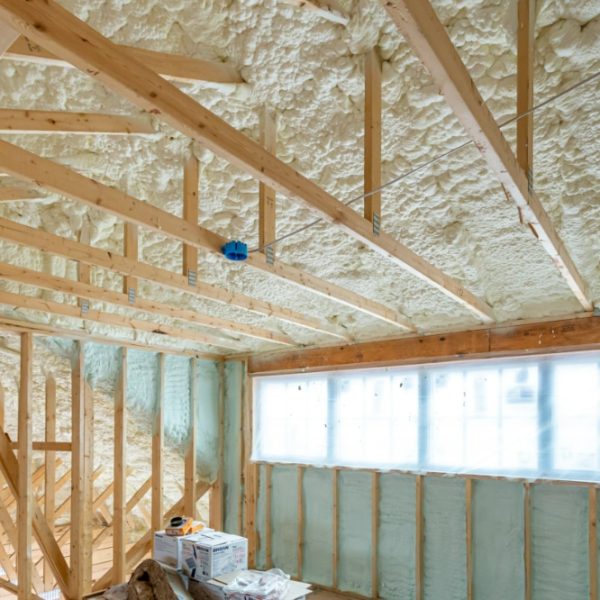Open Cell Foam Insulation Company

Choosing Open Cell Foam Insulation
If you’ve settled on spray foam for insulating your home, congratulations: you’ve made the superior choice in insulation materials.
But what’s the difference between closed cell foam and open cell foam? How do you know which to pick?
Solanco Spray Foam is a closed and open cell foam insulation provider in Central Pennsylvania that can help you make the right choice for your space, with experienced open cell spray foam installations and closed cell foam installations alike, providing unparalleled service to keep your home in tip-top shape and save you money.
Learn more and get a free quote by calling Solanco Spray Foam today!
We Are A Open Cell Foam Insulation Provider
Spray Foam Near Me: Why (or Why Not) Open Cell Foam?
When it comes to insulating your home, you have choices.
The cheapest insulation is fiberglass batting, which you can buy at any big box home improvement store. Fiberglass is easy to install by yourself (though itchy), affordable, and provides decent insulative qualities. It provides an R-value of about 2 per inch.
What is R-Value? The effectiveness of insulation materials in reducing heat transfer is determined by its R-value. A higher R-value indicates better insulation, and it’s measured per inch. A 3-inch thick layer of R-value 2 insulation will have a total R-value of 6.
Rock wool, mineral wool, or blown cellulose are typically next in the line up, as these materials are still affordable, provide competitive R-value, and can be installed by just about anyone. These materials have an R-value of around 3 per inch.
All batting materials can be installed between ceiling joists and wall studs in most modern homes, and they come in a variety of thicknesses.
Open cell foam insulation is a type of spray foam insulation made from polyurethane, and it’s applied as a liquid to form a foam that expands and hardens. It is a lightweight, semi-rigid foam that creates an air barrier to seal gaps and cracks, reducing air infiltration and energy loss. It can also be used to fill cavities and gaps in walls and ceilings, providing an efficient thermal and acoustical barrier. Open cell foam has an R-value of about 5 per inch.
Closed cell foam is considered the most insulative of modern home insulation materials. Closed cell foam is a spray foam composed of individual cells that are not interconnected, but instead are fully sealed off from each other. It is more rigid and strong than open cell foam, and is often employed for insulation, durability, air proofing, and water-proofing. It has an R-value of 7.
Chances are if you’re looking for a spray foam installer in Pennsylvania, you know that spray foam is the superior choice. So how do you decide between closed cell and open cell?
The Benefits and Disadvantages of Open Cell Foam
Benefits
Increased Energy Efficiency
Open cell spray foam insulation has a higher R-value than traditional insulation materials, meaning it can better trap air, block air movement, and reduce heating and cooling costs.
Reduced Noise
By sealing air leaks and providing a highly effective noise absorbing material, open cell spray foam insulation helps reduce noise from outside or inside the home. In fact, open cell foam insulation tends to reduce noise better than closed cell foam, fiberglass batts, and most traditional insulating materials.
Durability
Open cell spray foam insulation is extremely durable, and is resistant to fire and pests.
Versatility
Open cell spray foam insulation can be used in many spaces, including attics, walls, crawlspaces, and basements.
Affordability
Open cell foam is often less expensive than closed cell foam due to the materials involved.
Disadvantages
So why not use open cell foam?
As Lancaster’s premier spray foam company, about 90% of our projects are closed cell foam rather than open cell. Here’s why:
Can Absorb Water
Open cell foam’s main drawback is that it can absorb water. In the event of a leak, closed cell foam is fully water-proof, meaning it won’t absorb moisture and increase the risk of mildew growth behind walls. It sheds water incredibly well.
Price Difference is Small
The price difference between closed cell foam and open cell foam installations is so small, it usually makes sense to get the better insulative qualities of closed cell foam PLUS the water-proof qualities.
Open cell foam can be a good option for interior, low-risk-of-moisture areas around the house, like between interior walls and underneath first-floor flooring. Because the goal is to retain heat in these similarly conditioned specific areas, open cell foam is a perfect option. And, in these settings, there is less risk of water infiltration.
Open cell foam’s superior sound absorbing qualities do make it a great option for soundproofing between two finished rooms or in commercial settings where sound is an issue inside a building.
